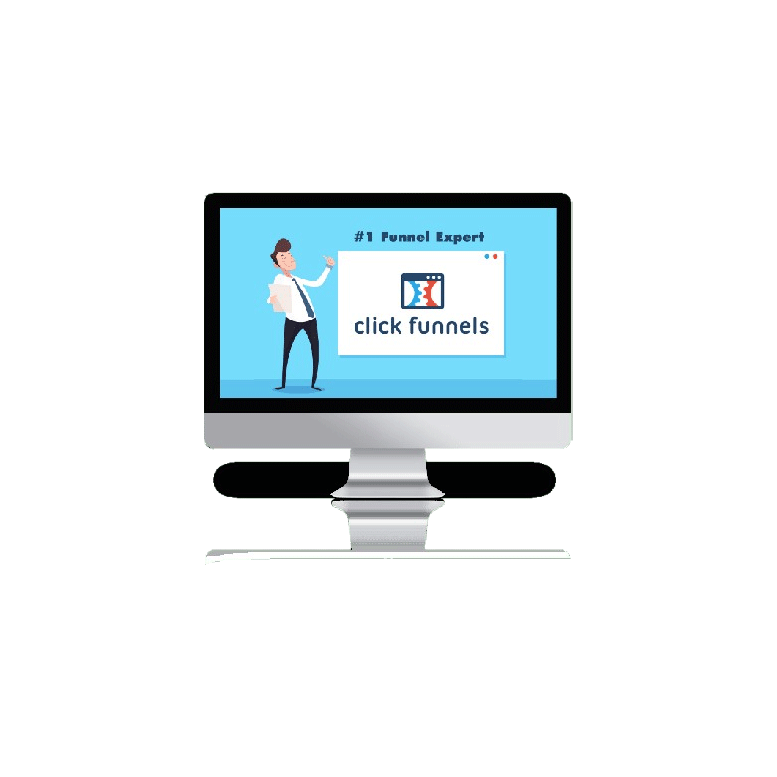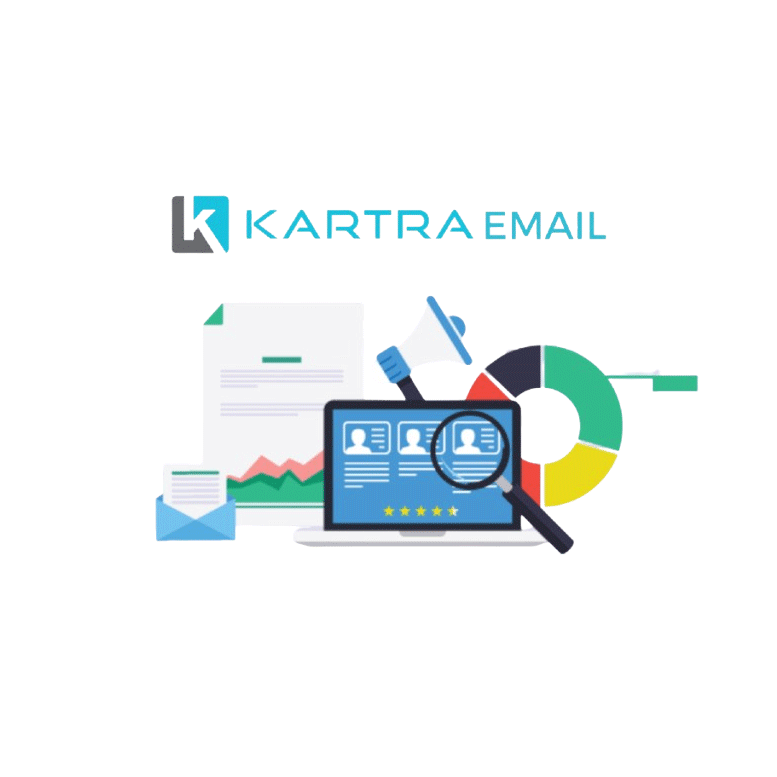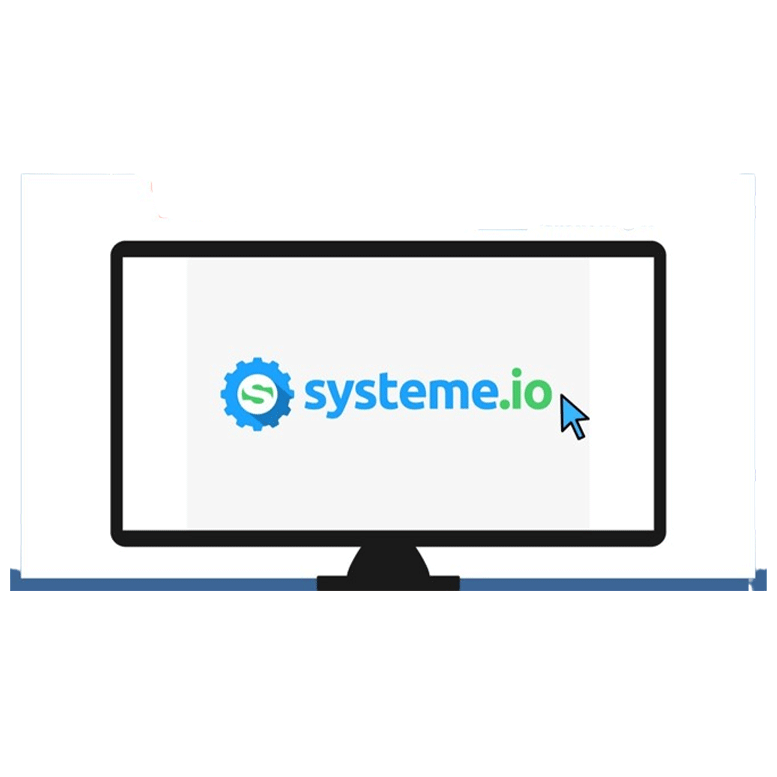Sales Funnels
Sales Funnels

ClickFunnels Review
ClickFunnels is an online sales funnel builder that helps businesses design and automate their sales processes. It allows users to create landing pages, sales pages, and marketing funnels without coding.

Kartra Review
Karta is a term used in Indian family law, referring to the head of a Hindu Undivided Family (HUF) responsible for managing assets, making decisions, and representing the family in legal matters.

Systeme.io Review
Systeme.io is an all-in-one online business platform that helps entrepreneurs automate marketing, build sales funnels, manage emails, create websites, and run affiliate programs, simplifying business operations.
What is a Sales Funnel?
A sales funnel is the journey potential customers take from discovering your brand to making a purchase. It represents the customer’s path to conversion, helping businesses understand and optimize each stage of the buying process.
Importance of a Well-Optimized Sales Funnel
A properly structured sales funnel guides potential customers smoothly through the purchasing process, reducing drop-offs and increasing sales. Key benefits include:
Higher conversion rates: Ensuring potential leads turn into paying customers
Better audience targeting: Delivering personalized content at the right stage
Improved customer experience: Streamlining the buying process for ease and convenience
How Sales Funnels Impact Conversion Rates and Business Growth

Sales funnels are essential for scaling a business. By analyzing each stage, businesses can:
Identify and eliminate weak points causing customer drop-offs
Implement A/B testing to optimize performance
Increase revenue by upselling and cross-selling products effectively
A well-structured sales funnel ensures businesses not only attract new customers but also retain and nurture them for long-term success.
2. The Key Stages of a Sales Funnel
Stage 1: Awareness (Top of Funnel – TOFU)
The awareness stage is the first step in the sales funnel, where potential customers discover your brand for the first time. At this point, they may not even be aware they have a problem that needs solving, making it crucial to create content that educates and engages them.
A strong awareness strategy builds trust and establishes your brand as a credible source in your industry. The goal here is not to push for a sale but to attract and inform your audience.
Key Strategies to Generate Awareness:
- SEO-Driven Blog Content: Writing high-quality, keyword-optimized blog posts that address common questions and problems potential customers face. This improves search engine rankings and drives organic traffic to your site.
- Social Media Engagement: Leveraging platforms like Facebook, Instagram, LinkedIn, and Twitter to share valuable content, interact with followers, and create brand visibility.
- PPC Ads (Google Ads, Facebook Ads): Running targeted pay-per-click (PPC) campaigns to drive traffic to your website based on users’ search queries and interests.
- YouTube Videos and Influencer Marketing: Creating engaging video content or collaborating with influencers in your niche to introduce your brand to their audience.
Key Metrics to Track:
To measure the effectiveness of your awareness strategy, track these important metrics:
- Website Traffic: The number of visitors landing on your website.
- Social Media Reach & Engagement: How many people are seeing and interacting with your posts.
- Impressions & Click-Through Rate (CTR): The number of times your content is displayed and how often users click on it.
By optimizing the awareness stage, you create a steady flow of potential customers entering your funnel, setting the foundation for higher conversions in the later stages.
Stage 2: Interest & Consideration (Middle of Funnel – MOFU)
At this stage of the sales funnel, your potential customers have become aware of your brand and are now considering whether your product or service can meet their needs. They’ve shown some interest, but they’re still evaluating their options. This is where you nurture your relationship with them, guide them toward making a decision, and continue to build trust.
Key Strategies to Engage and Nurture Leads:
Lead Generation (Free eBooks, Webinars, Free Trials):
Offering valuable resources like eBooks, whitepapers, or access to exclusive webinars can capture your leads’ attention and provide them with insights that align with their interests. By offering something of value for free, you create a low-risk opportunity for prospects to engage further with your brand. A free trial can also be an enticing offer, allowing customers to test your product firsthand, making them more likely to convert later.Email Marketing Campaigns:
Email remains one of the most powerful tools for nurturing leads. By building an email list of prospects who have shown interest, you can send targeted messages, offers, and content that continue to push them further down the funnel. Personalization plays a key role here—tailoring your messages to the specific interests and actions of each subscriber can dramatically improve engagement and conversion rates.Retargeting Ads to Nurture Leads:
Not everyone will convert on the first visit to your website. Retargeting ads allow you to follow up with visitors who have shown interest but haven’t yet taken action. These ads can remind potential customers of what they viewed, offer them a limited-time discount, or highlight key benefits of your product. By staying top-of-mind, you increase the likelihood of eventual conversion.Social Proof (Testimonials, Case Studies):
As leads move further along in their buyer journey, they’ll seek validation from others. This is where social proof comes into play. Incorporating testimonials from satisfied customers, case studies, and success stories can be incredibly persuasive. Social proof demonstrates that others have benefited from your product or service, reducing any perceived risk and boosting credibility.
Metrics to Track:
To measure the effectiveness of your efforts in this stage, it’s important to keep an eye on the following metrics:
- Email Open Rates: A high open rate indicates that your email subject lines are compelling and that your audience is interested in hearing more. Low open rates may signal that you need to revise your messaging or targeting.
- Engagement Rate: Tracking how recipients interact with your emails (clicks, replies, forwards) gives insight into how relevant and engaging your content is.
- Webinar Attendance: If you’re using webinars as a lead-generation tool, monitoring attendance and participation rates is crucial. A high attendance rate means your webinar is resonating with your target audience, while a low rate suggests you may need to refine your promotion strategy or content.
By actively nurturing leads in the middle of the funnel, you’ll build stronger connections with potential customers, increase the likelihood of conversions, and pave the way for successful sales. Remember, at this stage, it’s about guiding prospects with value and trust, making them more comfortable and confident in choosing your solution.
Stage 3: Decision (Bottom of Funnel – BOFU)
By the time a lead reaches the bottom of the funnel, they’re ready to make a decision. They’ve been nurtured through the earlier stages, and now they’re evaluating whether your product or service is the best solution to meet their needs. This is the moment when they’re most likely to convert into a paying customer, but you need to offer the right incentives and support to push them over the edge.
Key Strategies to Convert Leads into Paying Customers:
Sales Pages with Persuasive CTAs:
A compelling sales page is critical at this stage. It should clearly communicate the value of your product or service, address any remaining concerns, and provide a clear path to purchase. Ensure your Call to Action (CTA) stands out and is persuasive—use action-driven language like “Get Started Now” or “Claim Your Offer.” The CTA should be easy to find and reinforce the benefit of taking immediate action.Discounts, Limited-Time Offers, Money-Back Guarantees:
By offering discounts, time-sensitive deals, or money-back guarantees, you create a sense of urgency that encourages leads to act quickly. These incentives reduce the perceived risk and make the offer more attractive. A limited-time offer creates urgency, prompting customers to take action before they miss out, while a money-back guarantee reassures them that if the product doesn’t meet expectations, they can get their money back.Live Chat and Personalized Support:
At this stage, customers may have lingering questions or concerns. Offering live chat or personalized support can be a game-changer. Being able to instantly respond to queries and provide tailored assistance can help overcome any final obstacles to conversion. Whether it’s about pricing, product details, or delivery, personalized support can significantly improve customer confidence and drive conversions.
Metrics to Track:
In this stage, it’s essential to focus on metrics that directly reflect the likelihood of converting a lead into a paying customer:
- Conversion Rates: This is the most important metric at this stage. It tracks the percentage of leads who actually make a purchase after entering the bottom of the funnel. A higher conversion rate indicates that your strategies are effectively driving sales.
- Cart Abandonment Rate: If a lead adds items to their cart but doesn’t complete the purchase, this is a sign of friction in the decision process. Monitoring this rate helps identify issues that might be hindering conversions—such as complicated checkout processes or unexpected costs.
- Customer Inquiries: Keep track of how many potential customers are reaching out for more information. High inquiry rates may indicate interest, but also that they’re not fully convinced. Use these inquiries to refine your sales pitch or identify potential barriers to conversion.
At this point in the funnel, it’s all about making it as easy and attractive as possible for the lead to pull the trigger and make the purchase. With the right combination of persuasive sales tactics, limited-time offers, and personalized support, you can maximize your chances of turning leads into loyal customers.
Stage 4: Action & Retention
Once a customer makes a purchase, the journey doesn’t end there. In fact, this stage is just as crucial as the previous ones because it’s where you turn one-time buyers into long-term, loyal customers. Focusing on customer retention and engagement helps you maximize the value of each sale and ensures that your customers stay happy and keep coming back.
Key Strategies to Retain and Engage Customers:
Post-Purchase Emails and Thank-You Messages:
Immediately after a sale, it’s important to show appreciation and continue the relationship. Sending a personalized thank-you email not only reinforces the customer’s decision to purchase but also sets the stage for future engagement. You can also use this email to confirm their order details, share useful information, or offer additional resources like user guides or tips for getting the most out of their purchase.Upselling and Cross-Selling Products:
Upselling and cross-selling are powerful techniques for boosting customer value. Once a customer has made a purchase, it’s a great opportunity to recommend related products that complement what they’ve already bought. For instance, if they purchased a camera, you could offer accessories like lenses, tripods, or protective cases. These tactics not only enhance the customer’s experience but also increase your average order value.Loyalty Programs and VIP Memberships:
Rewarding repeat customers through loyalty programs or VIP memberships is an effective way to foster long-term relationships. These programs incentivize customers to return by offering discounts, exclusive deals, or early access to new products. By making them feel like part of an exclusive club, you increase the chances of repeat purchases and build strong brand loyalty.Customer Feedback and Review Requests:
After the purchase, gathering feedback through surveys or asking for reviews allows you to understand the customer’s experience and identify areas for improvement. Positive reviews can be used as testimonials for future marketing, while constructive feedback helps you refine your product and service offerings. Additionally, actively seeking reviews shows that you value customer input and are committed to providing the best possible service.
Metrics to Track:
The focus in this stage is on ensuring customer satisfaction and encouraging repeat business. Here are the key metrics to monitor:
- Customer Retention Rate: This metric tracks how well you are keeping customers over time. A high retention rate indicates that customers are satisfied and loyal, while a low retention rate may signal issues with your product or service.
- Repeat Purchases: Tracking how often customers return to make additional purchases is a great way to measure the success of your retention strategies. Repeat buyers are often the most valuable to your business, as they’re less costly to acquire than new customers.
- Customer Lifetime Value (CLV): This metric calculates the total amount of money a customer will spend on your products throughout their relationship with your brand. A higher CLV means that customers are not only coming back but also spending more, which is a clear sign of loyalty and satisfaction.
In this stage, your goal is to ensure that your customers feel valued and continue to find reasons to interact with your brand. By nurturing these relationships, you increase the likelihood of repeat business, higher customer lifetime value, and strong brand advocacy.
Common Mistakes to Avoid in Sales Funnels
While building a sales funnel, it’s easy to get caught up in the excitement of the process and forget some key details that can make or break your funnel’s performance. Here are some of the most common mistakes to avoid to ensure you’re not losing valuable leads and sales.
Not Optimizing for Mobile Users
In today’s digital age, the majority of online shopping and browsing is done through mobile devices. If your sales funnel isn’t optimized for mobile users, you’re missing out on a huge segment of potential customers. A poor mobile experience—such as slow load times, hard-to-read text, or difficult navigation—can lead to high bounce rates and abandoned carts. Make sure your funnel is mobile-responsive so users can navigate easily, regardless of the device they’re using.
Complicated Checkout Processes Causing Drop-Offs
A complicated or lengthy checkout process is one of the leading causes of cart abandonment. If customers are faced with too many steps, confusing forms, or unexpected costs, they’re likely to abandon their purchase altogether. Keep your checkout process simple and straightforward. Offer guest checkout options, clearly display the total cost, and provide multiple payment methods to ensure customers can complete their purchase without frustration.
Weak or Unclear CTAs
Your Call to Action (CTA) is arguably the most important part of any sales page, and it needs to be compelling and clear. Weak or vague CTAs like “Learn More” or “Submit” fail to motivate users to take action. Instead, use strong, action-oriented language like “Buy Now,” “Start Your Free Trial,” or “Get Instant Access.” The CTA should be placed prominently and repeated at strategic points throughout your sales funnel.
Not Leveraging Email Marketing for Nurturing Leads
Email marketing is one of the most effective ways to nurture leads and keep them engaged throughout the sales process. If you’re not using email campaigns to stay in touch with potential customers, you’re missing an opportunity to build trust and provide valuable content that guides them closer to a purchase. Set up automated email sequences that nurture leads by offering helpful information, reminders, and incentives, all while keeping your brand top of mind.
Ignoring Customer Retention Strategies
While the main focus of a sales funnel is to convert leads into customers, many businesses make the mistake of ignoring what happens after the sale. Retaining customers is just as important as acquiring them in the first place. If you don’t focus on post-purchase engagement, you risk losing those customers to competitors. Implement strategies to build relationships, such as loyalty programs, personalized offers, and follow-up emails, to keep customers coming back and increase their lifetime value.
Best Practices for Optimizing a Sales Funnel
To truly maximize the effectiveness of your sales funnel, it’s essential to not only build it strategically but also continuously refine and optimize it over time. Here are some best practices to help you make sure your funnel is performing at its best:
Conduct A/B Testing to Improve Conversion Rates
A/B testing is one of the most effective ways to identify what works and what doesn’t in your sales funnel. By testing different versions of your landing pages, email subject lines, CTAs, or even images, you can determine which elements perform best and drive the highest conversion rates. Small changes—like altering the color of a CTA button or changing the headline—can make a significant difference in how well your funnel performs. Regularly conducting A/B tests ensures you’re always optimizing for the best possible outcomes.
Implement Marketing Automation to Nurture Leads
Marketing automation allows you to streamline your lead nurturing process and save time while still delivering personalized content to potential customers. With tools like email sequences, retargeting ads, and automated follow-ups, you can keep leads engaged without constantly having to manage them manually. For example, once a lead downloads an eBook or signs up for a webinar, an automated email campaign can provide them with additional value and guide them through the funnel towards a purchase. Marketing automation helps ensure that no lead is left behind, making it easier to scale your funnel.
Use Analytics Tools to Track Performance and Optimize Weak Points
You can’t improve what you don’t measure. Analytics tools are essential for tracking the performance of your sales funnel at every stage. By monitoring metrics like conversion rates, bounce rates, and engagement levels, you can pinpoint weak spots in your funnel that need attention. For example, if you notice that a significant number of leads are dropping off at the checkout stage, it may indicate a problem with the user experience or the payment process. Regularly reviewing analytics allows you to make data-driven decisions that improve the overall performance of your funnel.
Personalize Content Based on User Behavior and Interests
Personalization is key to keeping leads engaged and moving through your sales funnel. By analyzing user behavior, such as which pages they visit, how long they stay, or which emails they open, you can tailor content to meet their specific needs and interests. For example, if a user has shown interest in a particular product, send them targeted offers or product recommendations related to that item. Personalized content makes customers feel understood and valued, which increases the likelihood of conversion.
